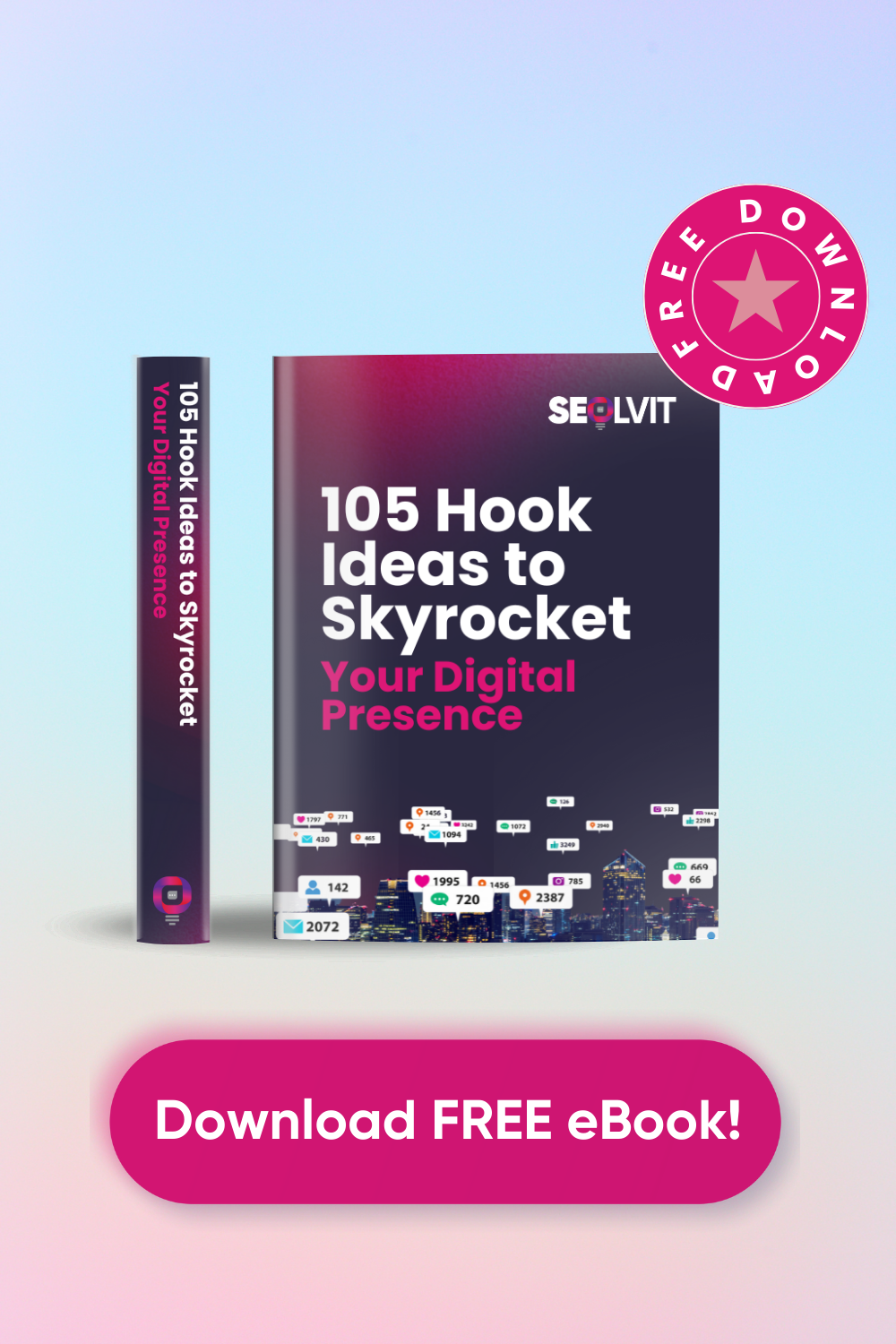Businesses are constantly faced with the challenge of grabbing the attention of consumers in a sea of marketing messages and digital noise. But how do they stand out?
One exciting approach that has shown great potential in breaking through this noise is FOMO marketing, short for Fear Of Missing Out. This clever marketing strategy goes beyond just getting people to notice your brand; it connects with consumers on a psychological level.
This strategy taps into a basic human fear we all have – the fear of missing out on something valuable or beneficial, whether an exclusive offer, a limited-time discount, or a unique customer experience.
By leveraging these common human instincts, FOMO marketing helps encourage consumers to make quicker purchases, increasing sales and revenue.
FOMO marketing isn’t just about impulsive purchases; it fosters a higher level of consumer engagement, turning one-time shoppers into repeat customers and even brand advocates. It’s a method that has proven effective across various industries, including service, retail, e-commerce, and software-as-a-service (Saas) sectors.
In this article, we will explore the ins and outs of FOMO marketing, including its tactics and ethical considerations.
Our goal is to provide a comprehensive guide explaining this powerful strategy and offering practical tips you can apply to your business. So, let’s dive in!
The Psychology Behind FOMO
Understanding the psychology behind FOMO, which stands for Fear Of Missing Out, is crucial for using it effectively in marketing. Basically, FOMO plays on our basic human feelings of needing something urgently and thinking there’s not enough of it. These feelings make people act quickly, like buying something or signing up for a service.
In psychology, a model called the Affect-Infusion Model explains how our emotions impact our decisions. FOMO marketing means that when people feel like they might miss out on something good, their emotions kick in, and they often buy things on the spot, sometimes without thinking too much.
When marketers understand these psychological aspects, they can create FOMO marketing campaigns that catch people’s attention and make them feel something. The goal is to make people feel they need to act fast or be part of something special.
This is done through limited-time offers, exclusive memberships, and showing that others are also interested (social proof). So, knowing the psychology behind FOMO can boost marketing campaigns’ effectiveness, making it a very important tool for marketers or small business owners.
Diverse Tactics in FOMO Marketing
Time-Bound Offers
One key technique in FOMO marketing is using time-limited offers. When marketers create a deadline, it encourages people to decide quickly.
For instance, saying things like “discounts only for a short time” or showing banners that say “sale ending soon” makes people feel like they need to act immediately. This feeling makes them act fast to not miss out on a good deal. This approach has worked well in many industries, like online shopping and event ticket sales.
However, it’s vital to stick to the deadline you set. If you say, “Offer ends in 24 hours,” and it doesn’t actually end, it can damage your reputation and make FOMO less effective.
Let’s consider a different example, like an online fashion store. They can use FOMO marketing by hosting a “Flash Sale” for trendy clothing items. The sale is set to last for just three hours, and on their website, they display a countdown timer next to each item to indicate how much time is left for the discounted prices.
Beneath each clothing item, they include a label that says, “Only X items left at this price!” This label updates in real-time as shoppers make purchases. Additionally, they send emails and push notifications to their registered customers, alerting them about the “limited-time discounts” and the fact that the sale will end shortly.
Because of these FOMO marketing tricks, the online store gets more people engaged and more people making purchases. Customers who feel they need to buy immediately to get a good deal are more likely to buy things right away.
This example shows that using time-limited offers in FOMO marketing really motivates people to take quick action, and I have to confess, I’ve fallen for it, too – it truly does work!
Restricted Access, Exclusive Access, and Elite Memberships
Exclusivity is a powerful tool in marketing strategies, especially for businesses like Software as a Service (SaaS) and subscription-based companies. But it’s not just limited to them; many other industries can also put this strategy to work effectively.
This method taps into the Fear of Missing Out (FOMO) feeling, making it even stronger. Companies use it by offering special features or benefits only to their premium or VIP customers. This idea makes their products or services look more appealing. But most importantly, it makes those customers feel like they’re part of something special.
This approach doesn’t only apply to tech or subscription businesses. Consider the fashion industry, for instance. High-end clothing brands often have exclusive collections or give early access to loyal customers, creating a sense of exclusivity. Restaurants can do it too, with special programs for their best customers, like reserved seating and unique menu items. This makes those customers feel special and keeps them coming back.
The exclusivity strategy has a double benefit: it meets the need for personalization, so customers feel recognized and appreciated. At the same time, it builds a community of enthusiastic brand supporters who enjoy their unique and special status.
So, no matter if you’re in tech, fashion, food, or any other business, using exclusivity in your marketing can make your brand more attractive, help you sell more, and keep customers coming back for more.
Social Proof and Peer Influence
Using peer influence and social proof is a key part of FOMO marketing. Instead of complex strategies, this involves getting customer reviews and sharing user-generated content. These simple actions show that your products are good and make other people feel like they might miss out if they don’t try them.
Peer influence is a big deal in FOMO marketing. When you show how real people are enjoying your products or services, it makes others want to join in. It taps into the natural feeling of wanting to be part of something others think is great. This group approach makes FOMO marketing even more effective.
So, whether you’re a big business or starting out, using peer influence and social proof can boost your marketing and make more people want to buy from you.
Strategic Implementation of FOMO Marketing
Understanding Your Audience
- Begin by getting to know your audience and what they like. Consider their age, where they live, and what they’ve bought before. This helps you create FOMO marketing that really speaks to them.
- Think about their interests and habits. Are they active on social media? Do they prefer emails? Understanding these details helps you reach them in the right way.
- Once you know your audience well, you can design FOMO marketing campaigns that match their preferences and needs, making them more likely to engage and purchase.
Choosing the Right Marketing Channels
- Pick the best places to show your FOMO marketing. Social media, email marketing, and websites each have their strengths.
- Use social media to share limited-time offers and create a sense of urgency. It’s a great way to reach a broad audience quickly.
- Email campaigns can work well for offering exclusive deals to your loyal customers. It’s a more personal way to connect and encourage them to take action.
Continuous Improvement through Analytics
- After launching your FOMO marketing, checking how it’s doing is essential. Use analytical tools to measure important things like how many people are buying your products and how engaged they are with your content.
- Keep an eye on metrics like conversion rates, engagement levels, and overall return on investment. These numbers help you understand what’s working and what needs improvement.
- Use the data you collect to improve your FOMO marketing strategies over time. By constantly refining your approach, you can continue to attract and retain customers effectively.
- If you can’t measure it, do not do it.
Examples and Ethical Considerations
Many companies have successfully used FOMO marketing to boost their sales. For instance, Amazon has a ‘Today’s Deals’ section offering limited-time discounts, making shoppers feel like they must act fast. Similarly, LinkedIn offers special features to its premium users, encouraging others to upgrade for better networking opportunities. These examples show how FOMO marketing can be really effective when used wisely.
But as FOMO marketing becomes more popular, we need to think about ethics. While it can get good results, companies should be careful not to take advantage of customers. Using tricks or creating unnecessary stress just to make money raises moral questions. It’s important to strike a balance between increasing sales and respecting customers’ well-being.
Being clear is key. Companies should make sure customers understand the terms of limited-time offers or exclusive features. Also, FOMO marketing should focus on genuinely valuable and useful things to customers.
Building trust and being honest is more important than trying to make a quick sale.
In conclusion, FOMO marketing is a powerful way to boost sales and connect with customers. Businesses can make people act quickly by using psychological triggers and different tactics like time-sensitive offers and exclusivity.
But remember, it only works if you plan carefully, use the right channels, and keep checking how it’s doing. So, FOMO marketing is a dynamic tool for marketers, but it needs to be used thoughtfully and responsibly.
If you’re looking for assistance in creating FOMO around your offerings, we’re here to help. Just click the link below to get in touch with us!






